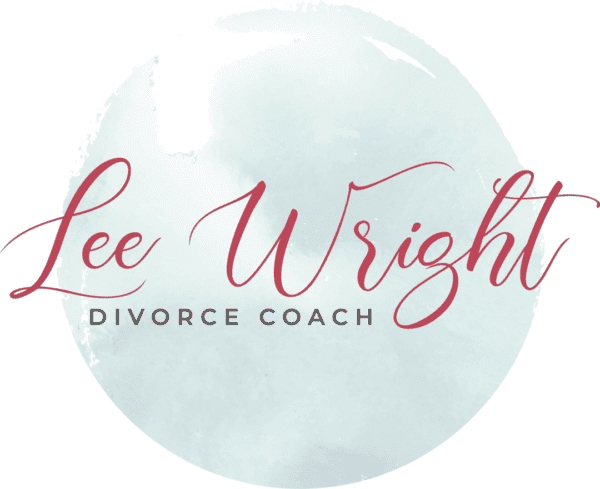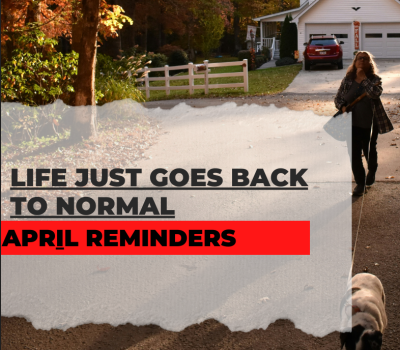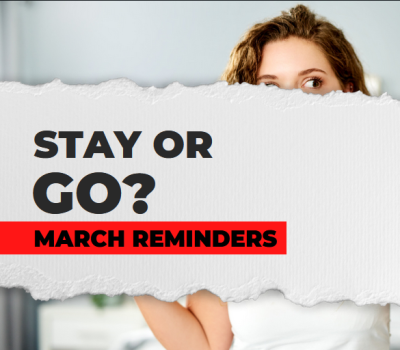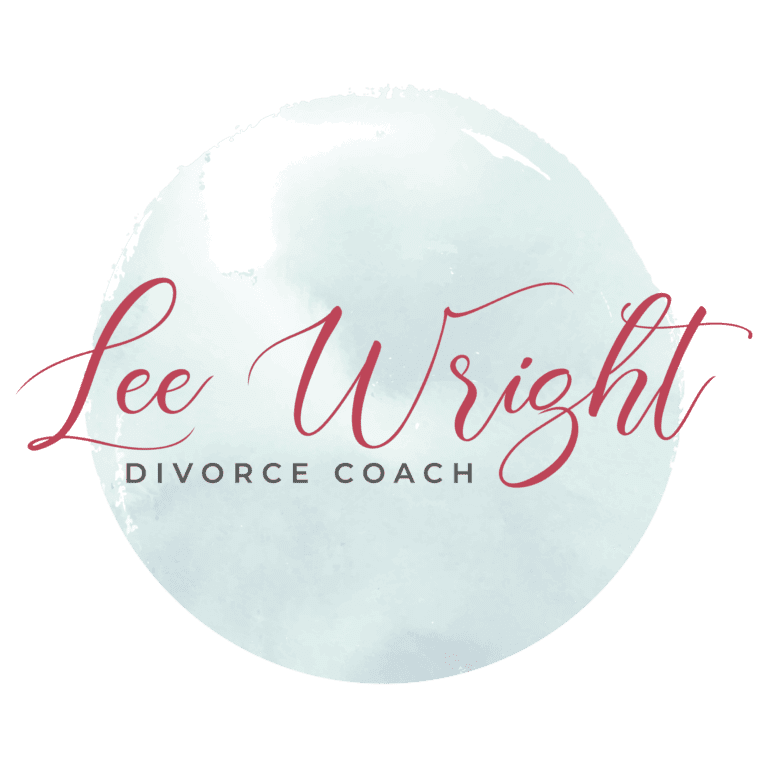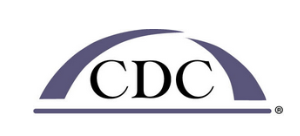Kianga Ford
Coach
Lee discusses the dynamics between masculine and feminine energies with Kianga Ford. They talk about the challenges for both men and women to find the balance of a strong polarity in the relationship in today’s society that elevates the masculine and many times does not respect the importance of the feminine energy fir healthy relationships.
Hey everybody, welcome back to Seasons Ebb and Flow, Leigh here and today I’m going to be interviewing Kiyanga. She is a friend of mine actually from many, many years and we have come in and out of each other’s lives in multiple different times and ways and she is a coach and a guide and a facilitator on topics related to masculine and feminine energy and the dynamics between the masculine and the feminine when it comes to love relationships and other relationships as well, but primarily love relationships and I found her out through my dance community. That’s where we initially met, but then I joined one of her women’s groups post-divorce and it was a really enlightening experience for me because I was not familiar with the concepts of masculine and feminine energy other than yin-yang, things like that, and I’ve since learned a lot and participated in quite a few different programs that she’s offered and read some of my own books that have enlightened me and I think it’s a topic that we don’t talk about that much, but I think it’s really important and I think for people who are going through divorce and trying to make sense of what happened and what went wrong and where did we both make mistakes, looking and understanding a little bit more about the masculine and the feminine is important and so I thought this would be a really beneficial conversation.
So I’m going to turn it over for a few minutes to Keeanga and let her tell us a little bit about how she works with people, what she does, how she got into this, and then we’ll go into the interview itself. So Keeanga, you have the floor to tell us a little bit about you. Awesome.
Yeah, it’s pretty wide open this floor I’m noticing. So I’m Keeanga Ford. I’ll just start by saying that for the last few years I have been working sort of under this company that I call Love and Freedom Education.
Maybe I’ll just start by talking about why I named it that, because I had a few iterations. It used to be Infinite Man Coaching. There was a moment where I worked exclusively with men on what I called collapsed masculinity.
And, you know, in this area of working with the masculine and feminine, I’ve also done a lot of reading, read a lot of David Data in the early days, and one of the things he highlighted that really stuck out for me is that love is the highest calling of the feminine and freedom is the highest calling of the masculine. And there are ways that we really don’t collectively understand how complementary those things can be. So we often are looking at love or freedom, right? Like I can either have my freedom or I can have connection and relationship or I can have connection and relationship, but I’m bound in all these ways and with all these obligations.
So I think that and is as important as love and freedom in the title, right? And usually the plus, looking at the ways that they like come together to actually make something that’s larger and more expansive when you understand the two energies. So now I work with men and women, and I think that’s fairly unusual. There’s a lot of men’s work out there and a lot of women’s work out there.
And we do work that’s very specific for women and work that’s very specific for men or the feminine and masculine identified. But we also come together in some very meaningful ways that I think is fairly unusual for this zone of work. So there’s a lot I could say, but I think I’ll leave it there for now and see where we want to go.
Okay, that sounds really good. And you know, it’s interesting because as a coach, I thought I would be working mostly with women through the divorce process. And I have as many male clients as female, and I was surprised by that.
But I really like it. I like working with both genders. And some of the questions and struggles are the same, and some are very different.
But it’s nice to see that we are all human, and we all have these big challenges through life and love and relationships. But they’re different in some ways that are very gender specific. And so I thought maybe to start, you could talk a little bit about the difference between the feminine energy and the masculine energy.
Yeah. So the first thing I’ll say to really clear up is that all people have masculine and feminine aspects. So when we’re talking about those energies, what we say is they’re correlated, but not absolute.
So it is more likely that masculine energy presents and is correlated to men who are biologically people who are biologically male. And the same for the feminine, but that’s not an exclusive calculus. You can find yourself anywhere on that continuum.
Very few people live all the way on one end or another of the spectrum. What it is that is so important for me in the work is helping people understand where their natural equilibrium point is on that spectrum. Because quite often, we’ve adapted to become more successful in the context that we’ve been in, whether those are our context of origin, our families, or our work environments, or our friend groups.
Usually we’ve done a lot of adapting. So we’re not the masculine feminine balance that most serves us and our creative potential. So I just really try to help people get back to that and really understand like, oh, we’re always moving across this spectrum.
And there are places where we can rest fairly easily when we understand what that organic balance is. So now I’ll answer your question because I want to make sure nobody is listening with a sense that it’s prescriptive. You should be more masculine or more feminine or you are feminine or you are masculine.
Let us tell you a little bit about how they work and you can figure out through exploration where you fall today and it’s shifting moment to moment and the work is about being able to make conscious choices about which aspect you’re occupying. Okay, so big picture. The masculine is the energy of no, the feminine is the energy of yes.
Why is that? The masculine is the energy of discernment and exclusion, not exclusion in a negative way. But like, when I learned I used to be a photographer, when I first learned about photography, when they talked about creating a picture, they talked about framing and they said all the time, what you don’t include in your picture is as important as what you do include in the picture. So the masculine really helps you see what does not belong in here.
So it creates really clear systems, right? The 61st minute does not belong in an hour. That’s actually what helps you make systems that are very clear, helps you make structures. That’s not, men are always saying no, that’s not what I’m saying.
The masculine is the energy of what is outside, what does not belong here. The feminine is the energy of yes, it’s, oh, in spite of all of our apparent differences, this is the thing that connects us, here’s the bridge, right? So it’s like, how can all of the things be included here? So that’s one frame that’s really helpful. If you look at that as kind of the horizontal frame, right? The no versus the yes.
And then we have the kind of heaven and earth plane, right? Which goes a little bit more this way. It’s the energy of embodiment, that’s the feminine, the energy of consciousness, right? Which is an awareness of what is happening here versus being actually fully embodied in the matter, fully of the material world. So it’s why we have like linguistic references to this, mother earth and father sky, right? The awareness of what is versus the experience of what is.
So those are some ways of thinking about the continuum. And, you know, often when I’m thinking about that consciousness versus embodiment, I often think about being at a dance party or a dance event, right? And I think we’ve all occupied both of these positions. In one, you might be like leaning on the wall, maybe you’re having a conversation with someone and you’re kind of like surveying the room, you’re observing.
Well, these people have danced together already for three songs. I wonder what that connection is. You’re taking it on, you’re becoming aware.
And then there’s that other moment where you are the dancer. You are that person being watched by someone else and you have no awareness of the being watched. You’re fully embodied in being the one who dances, right? And so that’s that like consciousness to embodiment range.
And yeah, important just to understand that we’ve all had experiences in the deep masculine, the deep feminine, when we can start to put language to them, we can be much more compassionate for the other people, right? Who are having the other side of that experience in any given moment. Yes. Yeah, that metaphor with the dancer versus the observer is beautiful.
Actually, I really connect to that. I think that’s really helpful. Thank you.
And talking also about how our family of origin impacts how we see ourselves versus where we naturally lie like that resonates for me a lot because like I grew up in a family where the masculine ran the house and the respect for the masculine energy was great. And the feminine was looked down upon for sure. And my parents are still together, but that power struggle exists on a day-to-day basis.
And my mom has a strength that has helped her stay there, I guess. But what I took away from that upbringing is the masculine is the power and that’s where you want to be. And it took me many, many, many years to even understand what feminine energy felt and looked like and respecting it, honestly, and then exploring that.
And that’s for me was what I got out of some of our early, the first program was eye-opening. And I also think in our patriarchal society, it’s hard sometimes to give the respect to the feminine because the masculine is kind of more recognizable as like what’s deemed as important. And so some of that unconscious training that we have is when people first start talking about this, it’s almost like, I don’t even understand what you’re talking about because it’s not something that we have explored because of our environment.
Totally. Well, when you’re the one who the rules are created for, it’s really easy to win the game. Oh.
And it doesn’t mean like, hey, men are bad or oppressive, nothing like that. But without really having been able to see it or talk about it until very recently, most of our world is built according to masculine values. So if we want to be successful, particularly in the spheres beyond the home, we have to participate in the expectations that are set from masculine values, which means we all go into masculine mode.
There are more and more women in the public sphere, in the workplace, in the workforce, but not really a noticeable increase in the feminine because we all go and then play according to masculine values. And there’s been a supposition that we’re only just beginning to be able to kind of chip away at that what are actually masculine values are universal values. That’s been the supposition.
Mm-hmm. Just the values of effectiveness, of productivity. If you want to be successful in the world, you have to be strategic and goal-oriented and linear.
And all of the things that we now know are just part of the masculine aspect. Mm-hmm. And so for so long, there was a hierarchy implied between the masculine and the feminine.
So nobody wanted to be more feminine because that was seen as being less empowered, less successful, less effective. Less efficient, less direct, less- Valuable, less accomplished, or- Or less good. Yeah.
And I think that hopefully, as time goes on, we can bring in some of the feminine even into the workplace. I think that would be really- I think it’s slowly happening, the recognition of the importance of humanity and soft skills and the focus on leadership is not all authoritarian drive. All of that is bringing a little bit of the beauty of the feminine into the workplace.
But I also think about the challenge for women to work in the masculine primarily when they’re out in the workforce and then come home and switch gears completely. Not completely, obviously, both men and women bring both characteristics into the home. But for a woman to embrace the polarity with the man in the home, she needs to shift that percentage of where she’s sitting from in the masculine to in the feminine once she walks in the door at home.
And that’s not as easy sometimes as it sounds. Well, it’s not as easy. And until a few years ago, nobody even knew that was a thing that one could do.
Yeah. Or that one might aspire to do. Yes.
And so one of the things I’m really careful with when we start talking about polarity is we’re not putting anybody into new age cages, right? There are no new templates for like, because it can sound a little bit like the new apron wearing wife in the kitchen with the fancy appliances. Not what we’re talking about. I think more often women have the experience of not knowing that they need to make that shift.
Staying in the masculine because that’s what’s been effective. It’s been what’s been effective in their professional life. It’s what got them to the professional life that they have now.
And so then they set the pattern for their relationship where they’re still running very high in their own masculinity. And over time, they’re feeling more and more under-resourced because they really wish that their partner would be making decisions and bringing more clear leadership and contributing more. And they don’t really understand how they’re occupying the space.
They’re taking up the space where their partners could do that because they don’t actually know the power of creating space to be filled versus moving forward. So the feminine receives, the masculine penetrates, right? The masculine moves forward and does what needs to be done. The feminine makes a space, creates sort of the bowl in which things can happen.
And if you don’t know that that’s what you need to do, you’re going to keep moving forward in the masculine wanting a different result. And I’ll say that the surest fire way to divorce, since that’s really the underlying topic here, is when couples get into relationships and what I call the upside down version of the code. The woman is really heavily practiced in being in the masculine and leans into that because that’s where she’s found success.
And the man is wanting, the man or the masculine partner is leaning more into the feminine because he’s been socialized to believe that there’s something wrong with masculinity, with masculine aggression, with masculine directness, wanting to really, they’re often some of the most empathic men. They really want to see the women in their lives succeed. And they believe that the way to do that is going to be to contract their own masculinity, to take up less space.
So they actually end up in the relationship in the feminine position, right? On the feminine end of the continuum. So that man, that partner over time, that masculine partner over time tends to feel more and more caged, contracted and resentful. The feminine partner tends to feel more and more isolated, more and more unmet, more and more like she’s leading on her own.
And that fosters fatigue and ultimately resentment. But those are delicate things. So unless you can figure out how to turn the whole thing simultaneously, you just topple it.
Because if one person moves to the masculine, right? If the feminine partner stays in the masculine and the masculine partner moves to the masculine, then it’s super weighted over here and it collapses. If both move to the feminine at the same time, it’s super weighted over here and it collapses. Mm-hmm.
In order to actually keep a balance there, you have to turn the whole thing simultaneously, which means you have to have awareness, skill, patience, compassion, and it’s rarely found. Yes. And I think respect for both energies.
Like when I think back to the house that I grew up in, there wasn’t respect for the feminine, the creatives, the fluid, the nurturing. It was, what are we doing? What have you accomplished? Where are we going? And what ended up happening was the looking down on all of those feminine characteristics. And so my mom, she stayed in many ways in a beautiful feminine space, but had to fight constantly against the looking down on those characteristics.
And so they were in this continuous power struggle. Like there was never… So I think the respect of both of those energies is so important. And recognizing the beauty in them from both partners and recognizing that the masculine is beautiful, but there’s a big difference between being controlling and sitting in a strong masculine.
So… Part of the challenge with toxic masculinity, right, quote unquote, is that it doesn’t give us a lot of space to examine masculinity and to look for what healthy masculinity really looks like, what its potential is, what it can be. And so you really throw the baby out with the bathwater, because if all masculinity is modified by toxicity, then of course you want to get rid of masculinity. But the healthy masculine is not controlling.
The healthy masculine is clear, and that’s very different than controlling. So it’s giving us the space where we can all kind of get down from the injuries and the suppositions, right? The supposition that the feminine is weak, the supposition that the masculine is controlling or unnecessarily aggressive, right? When we can let go of those things and actually see, oh, here are the gifts and the benefits of each of those aspects, of each of those positions, then we have the ability to play with each other in a way that is deeply complementary, creative, and generative. But we have to see it first.
Right. Yeah. And when you work with people to help them find their natural place, if they’ve been brought up in an environment where it wasn’t supported, how do you help people with that? What does that process look like? You know, a lot of the work that I do is in groups, is in communities, because it’s often so much easier to see a thing in someone else than it is to see it in yourself.
So when you’re in a circle of people who are focused on connecting with feminine and feminine power, or when you’re in a circle of people who are focused on connecting with the strength and the capacity of the masculine, it really is like a constant ping back of, oh, that’s what it could look like. Oh, that’s what it could look like. There are as many examples as we have people and moments within our communities.
So more than providing information, I provide a context for that unfoldment where people can self-examine and also be witness to the self-examination of others and have a real kind of data set of different ways that it can express. Yeah, I agree. I do think there’s something beautiful working in community, and it is so helpful to hear everybody else’s experiences and challenges.
And for one, it makes you feel less alone, less like, oh, I’m the only one who experiences these problems or thoughts or challenges. But also it’s eye-opening to have other people’s experiences help you learn, even if your experiences are so different. So, yeah.
I mean, the live event that we had just for New Year’s, there were women in their 20s, and at least one of our participants was in her 80s. And just the ability to see that, oh, wow, we’re having shared experiences across what is usually thought about as an unbridgeable gap, right? Like those experiences are just so different, but actually they’re not. The way that the feminine has been suppressed, has been not understood, has been not engaged.
There is a real continuity in the experience that a woman who is 80-something would have had, and the experience of a woman who’s 20-something. And we’d like to think that we’ve come a long way, but in the ways that we don’t understand the feminine, there’s more continuity than there is difference between those two experiences. That’s really interesting.
Yeah. And so, one of the programs that I think was also really eye-opening that I did with you was the, I can’t remember what it was called, the dinner, but where we worked with men and women together, and working on where we’ve been hurt by the masculine or the feminine, and sharing our experiences and healing together was really beneficial, and also shocking to see and hear how many different stories there are where we’ve been so hurt by the other that we put up blocks or walls around our heart or protections for fear of having that happen again. And that process of sharing with the other and forgiving, even though it wasn’t the person who hurt you or the inner, you know, it was really just really heart-touching in so many, and opening.
It was like a release and a softening. And I don’t know, maybe you could talk just a little bit about what that process is and why it’s important. Yeah.
That’s the union dinner. And we actually are just putting up some information about union dinners for 2024. Yeah.
What can I say about that really briefly? We are open to hosting them in different cities or having them in different cities where people want to host. So get in touch if that’s something that seems interesting. But what I’ll say about it is it’s one of those really meaningful points of intersection, right, of connection, of building compassion, of mutual understanding.
And we do a lot of work in sort of our separate areas, right, work on really healing and capacitating the masculine, and really embodying and trusting the power of the feminine. And this is that moment where we can really come together and see like, oh, this thing that I’ve done habitually is very painful for you. This way that I don’t receive you, that I don’t acknowledge you, that I don’t understand, even your capacity to have been injured is hurtful.
We collectively give very little space for men and masculine identified beings to have been injured. Yes.
We tend to look at them as the oppressors, as the predators, as the problems. And they are also so harmed by our system as it is with no even recognition, no ability to come out and say, ouch, or that hurt, or I’ve been harmed for fear of being ridiculed, for fear of being reprimanded, told like you’re delusional. You’ve benefited so much from your privilege.
You couldn’t possibly have also been hurt. And so really creating a space for an open dialogue where we can see like, this is what we have the capacity to bring to each other. And this is also the capacity that we have to do each other harm.
We have to recognize our power in order to really come more deeply into our compassion. And yeah, that opportunity is really magical. It’s one of my favorite formats.
Yeah, it really was a beautiful process. And in the woman’s group that I participated in with you, we read the book, The Queen’s Code, which was a very simple, not fancy a tale, I guess, I don’t know, a parable, that kind of captures a little bit more of the essence in the day to day practical, how this might expand or unfold in day to day life, because what we’ve spoken about is a little bit more ephemeral, big picture. But I thought that book was really helpful to look at how we as women and men can create a beautiful partnership that respects both the feminine and masculine in each of us, and creating that healthy balance where there is that respect for what we each bring, and how that might look in real life.
So I think that that’s a good, simple introduction for people who are new to some of these ideas. Yeah, big shout out to Alison Armstrong, who is one of the pioneers in this work. I studied with Alison as I was beginning to explore these terms and come to understand their implications.
And she’s finally recorded The Queen’s Code as an audio book. Oh, big shout out to Alison. I haven’t gotten mine, but I’ve heard from a few people that The Queen’s Code is now available on her site, not on Audible, I don’t think yet, but her site as an audio download.
I highly encourage it as a read. I think that it can create a histamine reaction for a lot of people without having a context to really digest it. So it’s one of the books that we read as a group in our year-long programs.
And it’s just helpful to have the support because I think a lot of times, I’ve seen a lot of times that when women start to read it, they’re kind of irritated, and then low-key offended. And, you know, it’s not great literature. It’s a wonderful book for what it is.
And then there can be some resistance to that as well. So I will say I highly encourage you to read it. If you really dislike it, read it again, or send me a DM.
Yes. And I will say, like, I was in a good place when I finally did read it because I was not angry anymore post-divorce, but I was recognizing that it takes two people for a relationship to fall apart. And even if I still believed at the time that it was more, there were, it could have worked better if he had done some things differently.
I recognize that obviously I’ve made mistakes and participated and showed up in ways that weren’t helpful for the success of the relationship. And I was ready to look at those things for myself and wanted to learn more and make sure I didn’t make those same mistakes moving forward. So I was able to take what worked for me to learn without feeling offended.
But I think, and I think it also depends on how you’ve been hurt by the other and what experiences you’ve had will impact your reaction to it as well. So yeah. It’s still one of the seminal texts in the field.
So yeah, I encourage you to read it. And last question, and then we’ll kind of wrap it up. In a lot of your talks or brief, you know, shorter programs, you talk a lot about surrender when it comes to the feminine desire and surrender.
And maybe you could just touch on a little bit of why those are so important. Yeah. I like that you bring them both.
I’ve been doing some writing recently about why I no longer lead with conversations about surrender. That’s ultimately where we’re going with the feminine. But until you have awakened to desire, surrender feels like acquiescence.
Surrender feels like submitting to some kind of external control, whether it’s like the control of a person or the control of an idea of spirituality. And so in order to have an agentful and co-creative relationship to surrender, which I believe is deeply generative, you have to have a relationship with your own desire and a relationship with love for self. Right.
I think that makes so much sense, actually. And I think once you have found ways to communicate that desire without being demanding or if I don’t get this, then this, then the surrender can happen. But taking the time to learn, focus, explore desire yourself on your own and learning what communicating that looks like in a healthy way that can lead to the space for surrender.
But yeah, I think that’s interesting. The surrender is leading with that for many people it’s just too confusing to. It’s titillating, right? People want to come in.
And so that’s, it’s literally why our programs are now staggered. They go year of love, then year of surrender, then co-creation, right? Because really kind of the things you have to master to go to the next level of depth within and the feminine as a modality of creation. Nice.
It’s kind of tempting to want to start with surrender. But if you start with surrendering, you’re not grounded in yourself, then you’re just kind of being tossed about in the ocean. Right.
Right. Yes. And that’s the self, self love and grounding is grounded somewhat in knowing your own desires or being in connection with those.
The feminine is led by desire in a mental way. Hmm. So on that note, I think this was a very nice introductory conversation for people who are interested and want to explore more.
If people want to find out a little bit more, read more about what you have to say or what you’re doing, where can they find you? We actually have a brand new Insta page that’s launching. It’s the second day of the year as we record. And so it’s launching this year.
It’s Love and Freedom Now. You can follow us. You can also follow me at Love and Freedom Education.
That’s our old page. But Love and Freedom Now will be a great place to come and get a flavor of what we’re offering and stay connected with our calendar. And we have a bunch of public offerings coming up.
And so that’ll be a place that you can go and find out what’s coming up in a way that’s really time aligned, since we, of course, don’t know when you’ll be listening to this. So if you go to Love and Freedom Now on Insta, you’ll be able to connect with what’s being offered currently. And I’ll also just make the invitation when you come to the page, send us a message.
And definitely, if you read the Queen’s Code, send us a message. Let us know what you think. We’re always curious to be in conversation with people who are ready to engage with these terms, with this understanding.
Yeah. All right. And I’ll make sure that that is in the description so people can click on the link from there if they’d like.
And thank you so much for your time and your work that you’re doing. And it has been very helpful to me. So I’m grateful for that in my growth and exploration.
And I think it benefits all of my clients for the learning that I have done and participated in with you. So I’m very grateful for all of that. That’s awesome.
It was so great to talk to you today and nice to meet your peeps. Yes. All right, everybody.
Thank you for listening.
